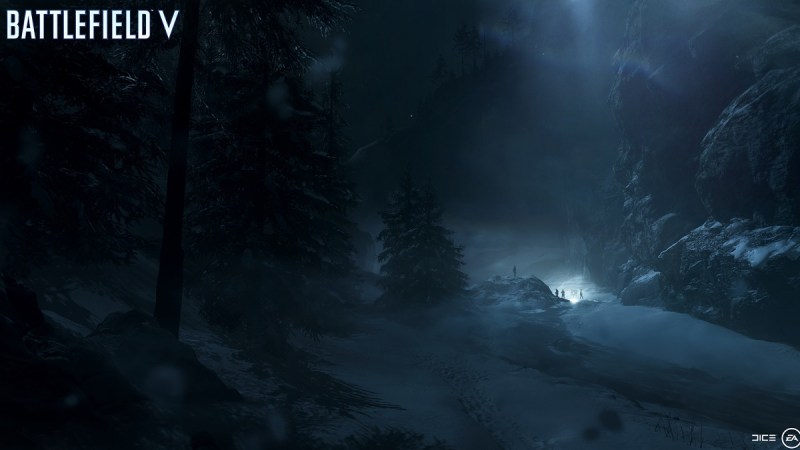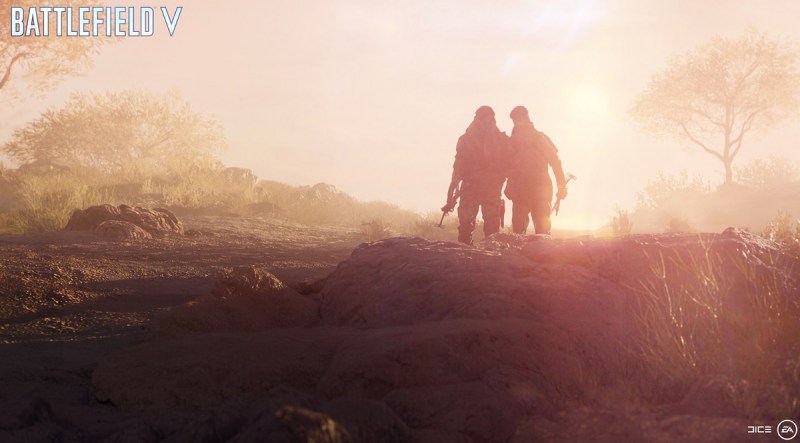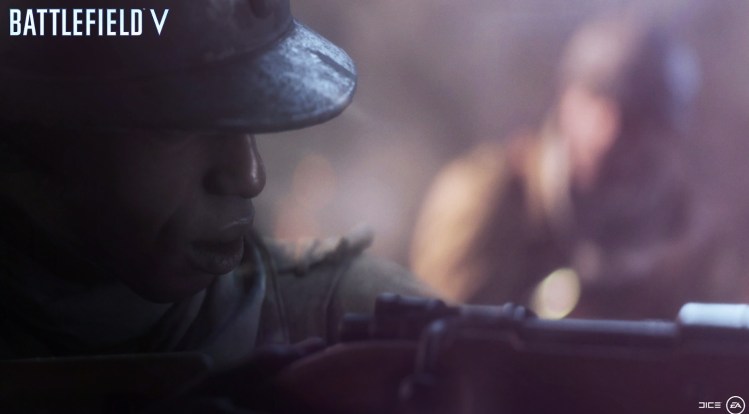And then with “Tiger” we have another dimension entirely, a much darker place. It has guilt. It has hostility between the characters in the story. It has a smoldering, dark heart to it. Contrasting that to SBS, it’s night and day. All those together, you have a range of offerings. Different people will like different ones. Each one is more discrete. There are different seasons. One’s more blue, one’s more red, one’s more gray.
GamesBeat: With Nordlys, how historical would that one be?
Holmes: With all of our stories, all of them have a bedrock of truth underneath them. If you go and look at, for example, the opening cards, the time and place, and then go look at what was happening in that time and place, the events that are happening there — we like to say that these stories didn’t happen, but they could have happened. If you go and look in there, there were offensives or combat or scenarios where these things could have happened in the cracks in history.
Nordlys, for example, takes place between Operation Grouse and Operation Gunnerside, which were two commando operations taking place exactly there, trying to hit the heavy water production facility there. Operation Grouse specifically is the commandos we here allude to in the opening. The heavy water facility is a real place. It looks quite like what we have. If you search for images you’ll recognize it. Another point would be that there were plenty of women working with the Norwegian resistance.

Above: The cold weather is your enemy, in addition to the Germans, in Nordlys story of Battlefield V.
GamesBeat: You mentioned that your Tiger tank here isn’t just the machine with a lot of hit points. It seems like the purpose of single-player is still to inspire the player to have more fun, be more invested when they do things like multiplayer. They’ll care more about their character or who they’re playing or the machines, because there was a story that hooked them in.
Holmes: Exactly. Playing a Star Wars game would be pretty weird if you hadn’t seen the movies, right? You might think the designs were cool, but if you saw the Death Star flying over a planet you wouldn’t know what that meant. But once you see the movie you know what it is and what it represents. It might inspire fear or awe. That’s the kind of universe-building we have to do in War Stories. We add texture and detail. We add a sense of being there.
I worked with a comic-book writer named Paul Jenkins a few years ago on some games, and he made a point about this adage Stan Lee had, which I love. When you open a Marvel comic often there’s that first page that shows you the characters’ faces and tells you a bit about them. It was there because Stan always said every comic is somebody’s first comic. You have to be able to pick it up and understand what the hell is going on.
There’s an element of that to War Stories. What is going on in this world? Why do I care? Who’s fighting who and what does that feel like? Rather than just red team versus blue team, tank versus plane. It’s the Axis and the Allies. It’s not a plane, it’s a Spitfire. It’s not a tank, it’s a Tiger or a Sherman. I know what those things represent and mean. It gets addictive after a while, once you start learning about this stuff. You find yourself on giant Wikipedia binges, or suddenly you have a collection of books. You get sucked into that world. World War II is one of those subjects that just draws you in.
GamesBeat: There are all these things you didn’t even know about, even if you might have been a bit of a buff. I didn’t know any of this history, even though I’ve read a lot.
Holmes: My favorite World War II buff thing, there was this really interesting bit of cat-and-mouse between the Messerschmitts and the Spitfires. In the Battle of Britain — to me that’s the most classic element of World War II, the defining image, being that I’m from the U.K. Do you know much about those planes and their technical setups?

Above: You’ll remember this Tiger tank in Battlefield V.
GamesBeat: I’ve flown them in games, but that’s all.
Holmes: There’s this super-nerdy thing, and I say that because it was nerdy even to the people who discovered it. You would get people figuring out technical ways to take out one plane or the other. “Finger-four” is the formation that the Germans would use, with the lead, two off to one side, and then one on the other. The Germans feared the Spitfires because they were faster. They couldn’t dive away from a Spitfire. The Spitfires would dive on them and get them.
But the Germans started breaking their formations. They would send two down, diving straight down, and the Spitfires would dive after them. They’d dive straight down because the Spitfires had carburetors, while the Messerschmitt 109s had fuel injection. They found that if they could pull the Spitfires straight down, the carbureted engines would stall out in the dive, and then the other two would come off the top and kill the Spitfires.
The only reason the Germans figured this out was because they found a Spitfire that had crashed in France, and they pulled the engine apart. Someone says, “That’s a carburetor. It can’t run unless it’s flat.” They passed that on to the pilots and they came up with this whole new strategy to take each other out. That level of technical nerdery is fascinating in this stuff. This whole level of cat-and-mouse technical upgrade stretches all across World War II.
GamesBeat: Diversity seems to have been a focus in this part of the game. You have a woman on the cover, women as key characters, black characters. People react to that and say, “Well, this isn’t historical.” But you have the germs of history, I think, that show people like this were there. They just didn’t get as much attention as some.
Holmes: Oskar Gabrielson from DICE has made the position pretty clear on that. I can’t speak to the multiplayer part of things, but Oscar has spoken about the game and his position being that women are here, and they’re going to be here for this game.
If you look at something like War Stories, we have the ability to create that context, which is great. When you play Nordlys I don’t think you question why this character is a woman. This is just her story. Even more strongly, you have a mother-daughter story. It’s funny. One of the women at DICE, I think she’s in business development, she came up to me and said, “I’m really glad you have a mother-daughter story in this game.” I had to think for a minute. “That’s right, it is. I can’t think of any other ones in games.”
We didn’t set out to do it because it was that kind of story. It just seemed to be the story that happened when we dug into the background and started to find out about women working with the resistance. It snowballed from there. I think it’s great that we have the luxury to explore who they are and why they’re fighting. Sometimes, when it’s in a trailer, it’s just there. It doesn’t have all the context that benefits it.

Above: Under No Flag in the War Stories single-player vignettes of Battlefield V.
GamesBeat: There’s one kind of historical buff’s reaction, and then there are people who do even more research and find there’s more to it.
Holmes: My favorite example of that from Battlefield One, in “Friends in High Places” we had an American volunteer pilot in a British squadron flying a Bristol fighter plane. The number of posts I read saying, “That never happened!”–
GamesBeat: I think I thought that too.
Holmes: But if you google up American volunteer pilots in the Royal Flying Corps, the first thing you’ll hit is records of them flying Bristols. I was even surprised when I found that, because I think I found out about it after we decided we were doing it. But it was great. We managed to take the squadron motto and put it in as part of the story. I knew there were volunteer pilots flying in the RFC, but I didn’t validate that they were in Bristols until after we decided to do that.
What’s also fun is when you see the community — sometimes someone starts yelling about something like that, and people will go and check it. Then they’ll start yelling back. “No, there is a precedent for this.”

